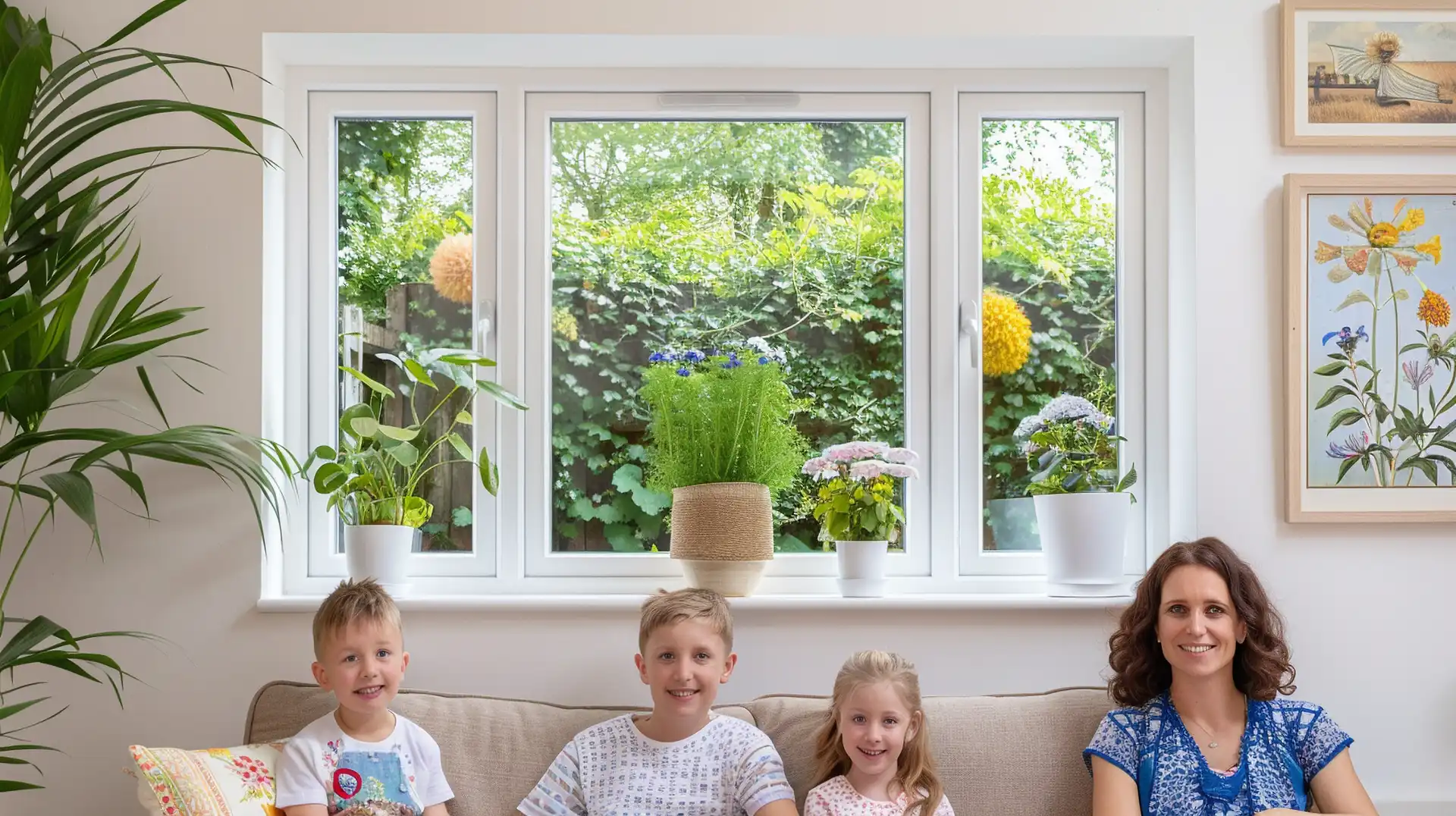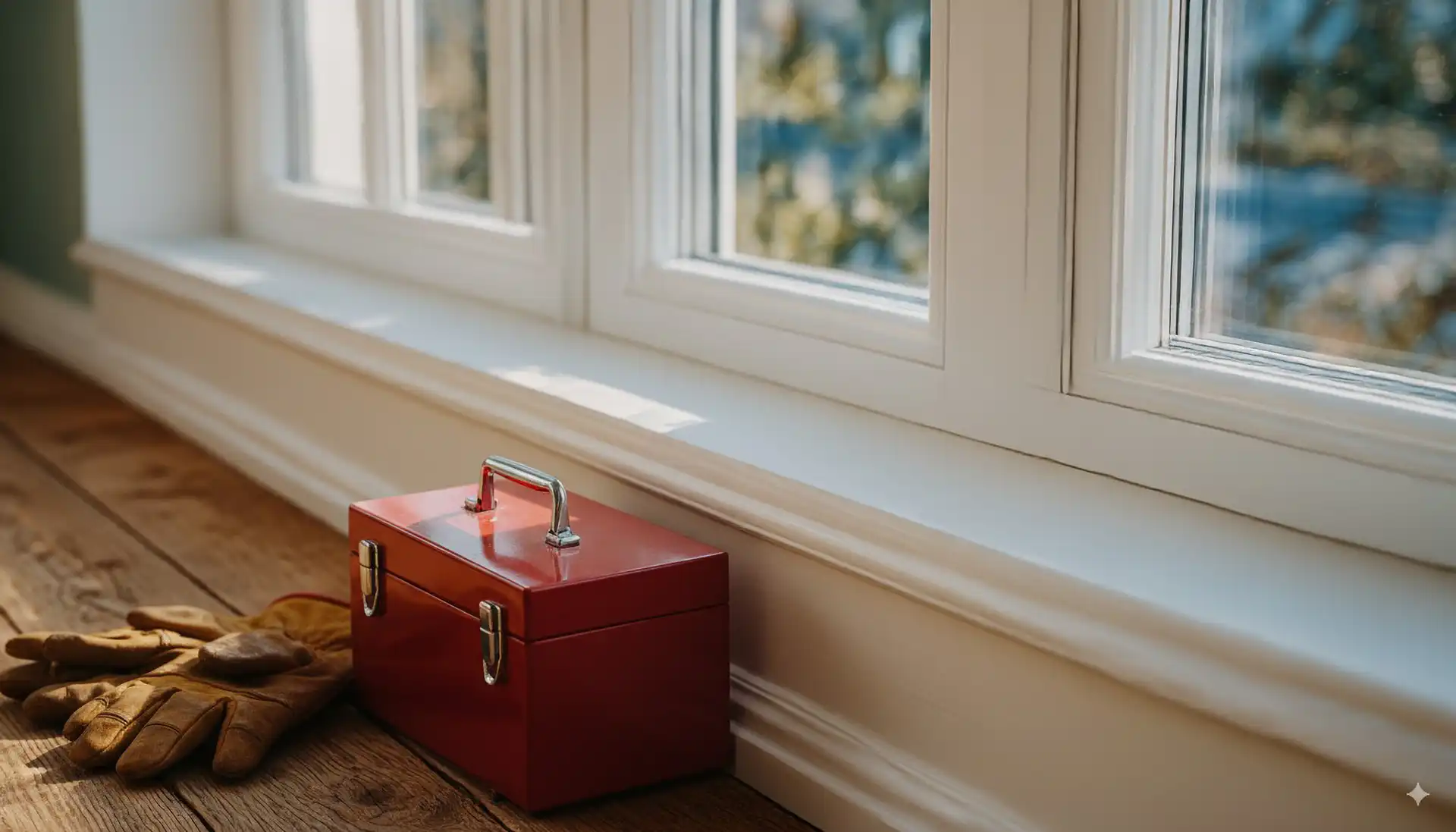

By The Windows and Doors Team
Your Local Glazing & Home Improvement Experts
Reading Time: 8 minutes
Quick Summary
It’s a familiar story for many UK homeowners.
The sound of a chilly draught whistling through an old window frame, the shiver as you walk past, and the dreaded sight of a spiralling energy bill.
As energy costs continue to bite, making your home more efficient is no longer a luxury but it’s a necessity.
But what if you could take back control without paying thousands for a professional?
This guide to DIY double glazed windows will show you how to do it yourself, save a fortune, and transform your home’s comfort.
The UK is in the midst of a home improvement revolution, and it’s being driven by one simple truth.
It’s often cheaper to renovate than to move. But the biggest motivation? Energy efficiency.
According to a recent Aviva report, a remarkable 56% of UK homeowners have made energy-saving improvements in the last two years.
This is a clear response to the cost-of-living crisis and spiralling energy prices.
Your windows are a significant weak point in your home’s thermal envelope.
According to the Energy Saving Trust, up to 18–25% of a home’s heat can be lost through inefficient windows.
This is a substantial drain on your energy reserves. Over half of all energy consumed in the home is used for heating, and draughts from poorly insulated windows are a key culprit.
Average heat loss from a typical UK home
Source: Energy Savings Trust, 2023
Ofgem stated the Default Tariff Price Cap for a typical household stood at £1,568 per year from 1 July to 30 September 2025.
This figure, a constant source of stress for families, highlights the need for a practical solution.
But with a single, smart investment in DIY double glazed windows, you can actively fight back.
By preventing heat loss, you can cut your reliance on the central heating system and see a tangible drop in your monthly payments.
When faced with draughty windows, most people assume professional installation is the only option.
But a professional job can be a serious expense. The typical cost for a professionally installed double glazed window can range from £400 to £600.
A full house refit could easily run into several thousand pounds.

The DIY market is growing precisely because people are looking to save money.
A staggering 62% of home projects are undertaken to keep costs down. Modern DIY windows kits are designed for this exact purpose.
They offer a simple, effective solution that can be installed by any competent DIYer.
Think of it this way: for the cost of just one professionally installed window, you could potentially insulate an entire room’s worth of windows with a high-quality kit.
This approach gives you complete control over the budget, the timeline, and the final result.
Installing DIY double glazed windows is a straightforward process that doesn’t require complex tools or years of experience. The entire process can often be completed in a single afternoon.
A modern upvc window profile isn’t just a simple hollow frame. It’s a sophisticated, multi-chambered system.
These internal chambers act as thermal barriers, slowing down heat transfer and dramatically improving the window’s insulation performance.
When you’re comparing quotes, be sure to ask about the number of chambers in the window frame—the more there are, the better the thermal performance.
For those concerned about the environment, modern uPVC window systems are also a sustainable choice.
High-quality uPVC can be recycled multiple times without losing its performance characteristics.
This “circular economy” model means your new windows can be made from recycled materials, which reduces waste and helps the environment.
When you’re shopping, you’ll see windows with an energy label, similar to those on appliances.
This is the Window Energy Rating (WER). The rating goes from G (worst) to A++ (best), providing a clear way to compare performance.
You’ll also hear about the U-value, which measures how well a window stops heat from escaping. The lower the U-value, the better the insulation.
Navigating bureaucracy can be daunting, but it’s essential for a smooth and legal long term investment.
When you install replacement windows, the work must comply with UK Building Regulations. To avoid the hassle and cost of a separate inspection by building control, always hire an installer who is registered with a government-authorised self-assessment scheme, such as ASSURE, FENSA (Fenestration Self-Assessment Scheme) or CERTASS.
These schemes guarantee that the work meets the required standards. Once the installation is complete, you’ll receive an ASSURE, FENSA or CERTASS certificate, which you’ll need if you ever sell your home.
Changing home windows is more than a simple home improvement project; it’s an investment in your comfort, security, and future.
By focusing on quality uPVC window profiles, understanding energy ratings, and working with a certified professional, you can ensure a successful outcome.
The right choice will not only lower your bills and increase your property’s value but will also create a better living space you and your family will love for years to come.